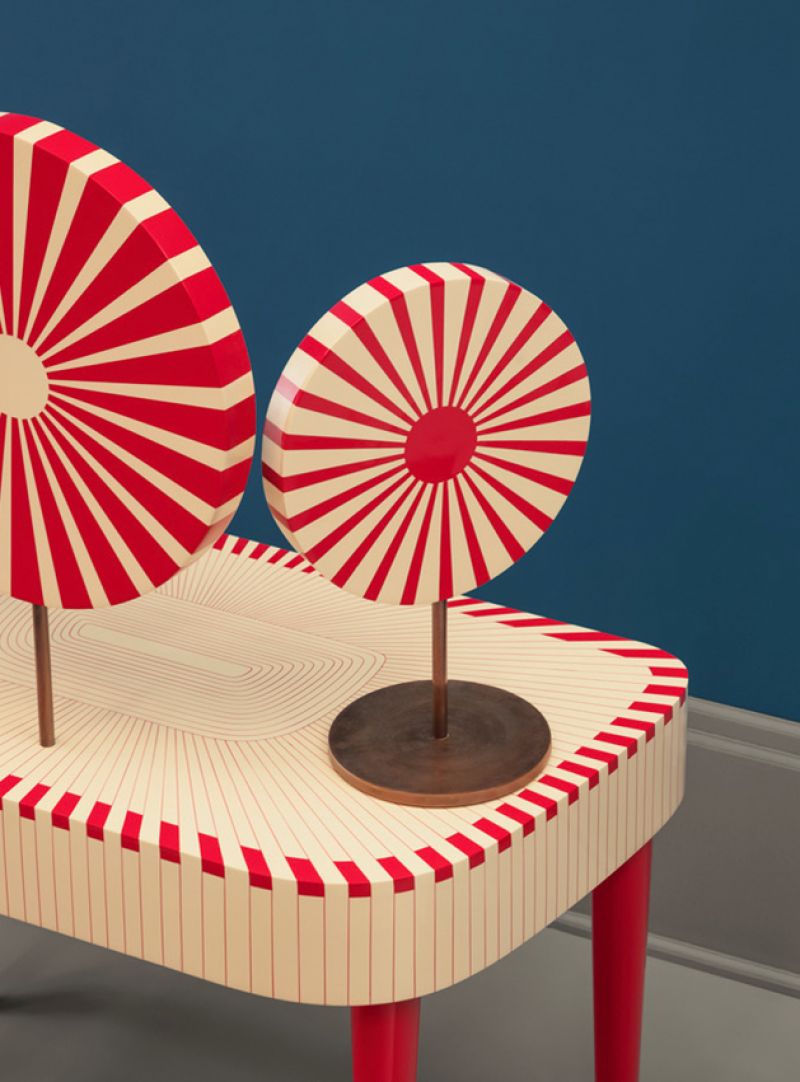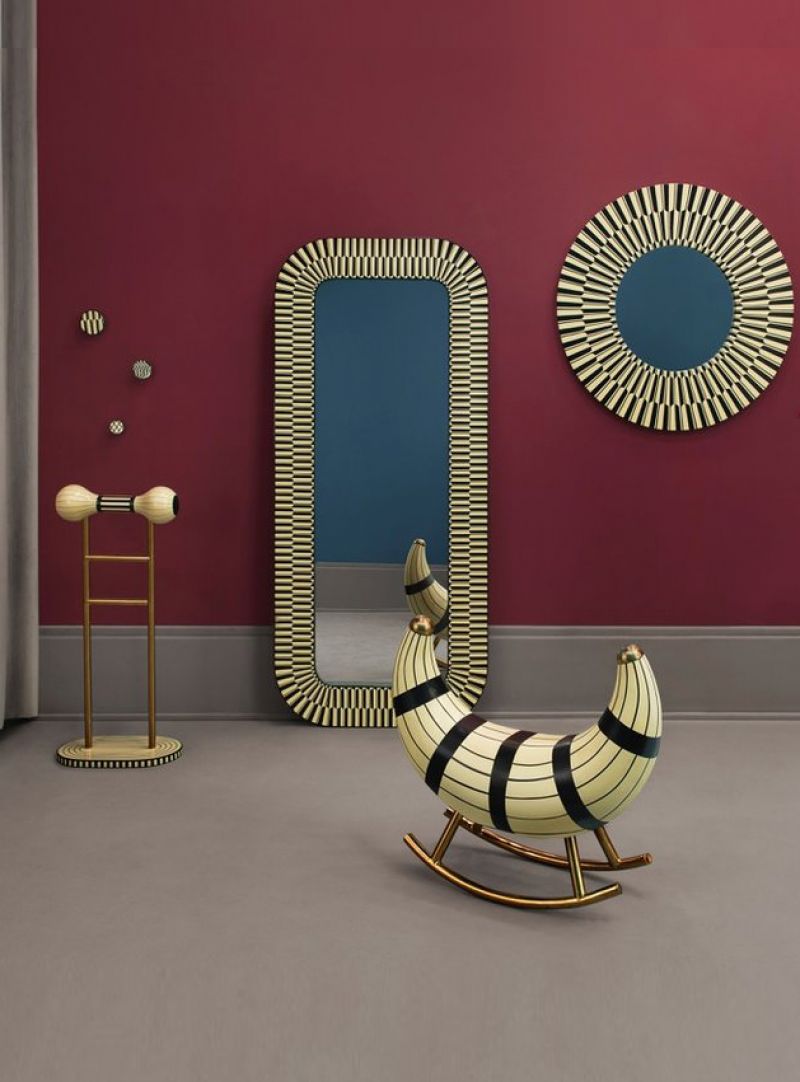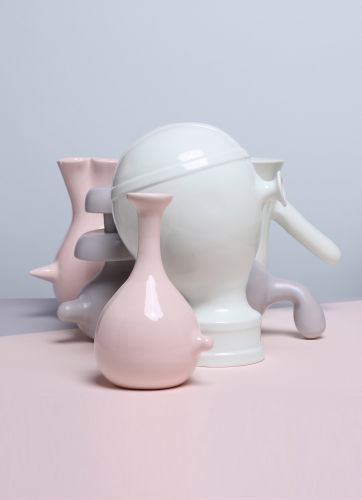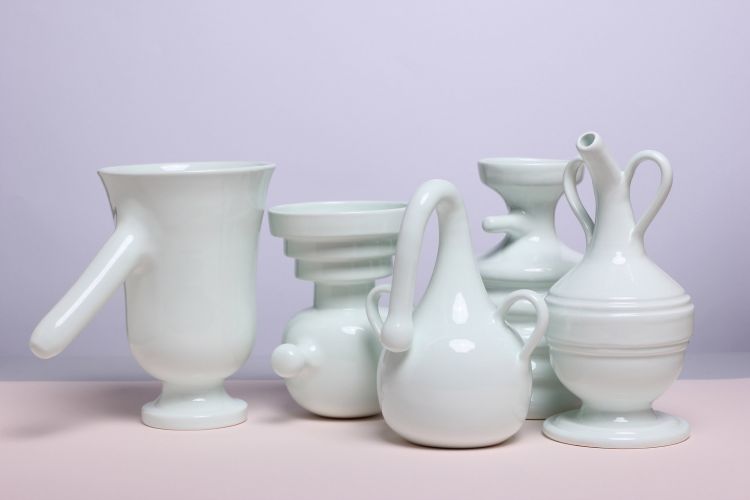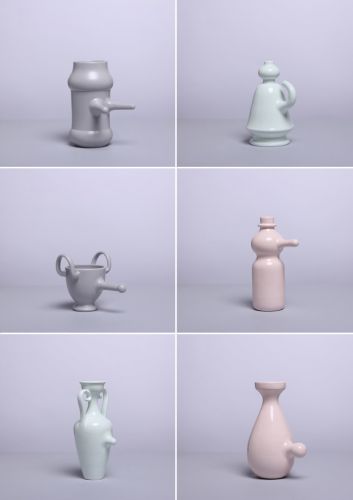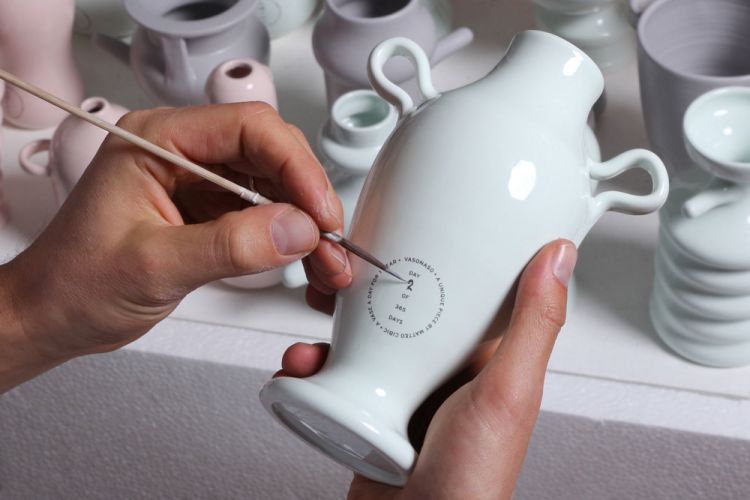vasonaso
Many relate spontaneously to the morphology of fantasy creatures like ‘Il Paradiso del Sogni’, a paradise full of dreamt figurines I drew up and transformed into ceramic objects. People like the figures, probably because they recognize some of them from their own dreams, or maybe the dreams they would like to dream. One of my big presentations at the Salone of this year was VasoNaso. Contrary to my ‘usual’ creative behaviour, which is all over the place, I decided to commit myself to a research project. The basic idea came from Italian painter Giorgio Morandi, who spent most of his life painting still life of bottles and potteries. So in 2016, every day for 366 days, at noon I turned out a handmade vase with a nose. This is personal, I like noses. The project is an investigation of the relationship between shape, colour and height. It then turned into an analysis of groups of objects, interpreted as if they were genealogical strains, joined by somatic features, and similar characters or colours.
Some of them were based on archaeological ceramics from the museo Egizio di Torino, Musée d'arts Decorative Paris and the V&A. I never copy anything, but freely resource all types of forms and cultures to see if parts of them fit into my own story. The history of art and architecture is one large compendium of inspiration to reconsider. You could even state that by exploring all sorts of historical and cultural layers, you step back from the drive towards the new and original, which has become a dogma of modern Western design. This might be serious stuff, but in the old days ‘disegno’ was taught by a master; one learned through imitating and eventually trying to emulate his work.
